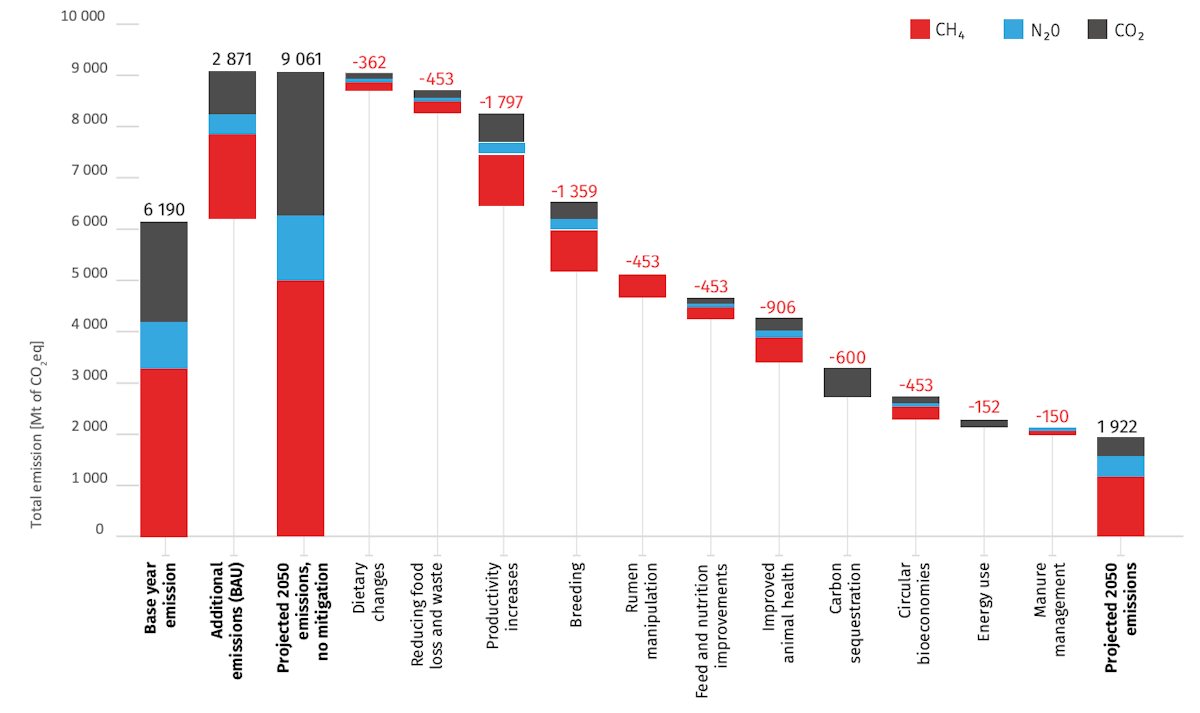A new study we and Nicole Soltis published in PLOS ONE finds that while nearly all beef has a very high carbon footprint, the lowest-carbon beef typically comes from the most productive operations; that is, those that produce the most beef per acre of land. This highlights the importance of properly accounting for land use when considering beef’s carbon footprint and how improving the productivity of beef production globally could have outsized climate benefits.
Livestock production is a major source of greenhouse gas emissions, contributing roughly 12% to 17% globally. Much of that is due to beef production, which generates about 5% of global emissions.
With rising pressure to cut emissions, many beef producers and companies are launching sustainability initiatives. Some focus on grazing cattle differently to sequester carbon. Others are experimenting with giving cattle feed additives that cut methane or adopting practices that cut emissions from manure. These and other efforts are critical to minimizing beef’s carbon footprint and other environmental impacts, and should be pursued and implemented by governments, researchers, companies, and other stakeholders.
Our study finds that one aspect of beef production, productivity or the amount of beef produced per acre, has a particularly strong relationship to beef’s carbon footprint. We compared the carbon footprint of 100 beef operations across 16 countries, accounting for emissions from production, such as from manure, enteric fermentation, and fertilizing crops used for cattle feed. This is where many studies stop. However, we also calculated the potential carbon sequestration from cattle grazing on pasture and rangeland. In addition, we estimated the impact of using land for beef production instead of restoring it or preserving it as native vegetation, often referred to as the carbon opportunity cost of land use.
The findings are telling: a 10% increase in beef production per acre is associated with a 9.0% decrease in carbon footprint. This strong relationship is predominantly due to the large amount of land that beef production uses and its high carbon cost. Beef production remains a leading cause of deforestation and other land-use change globally, and often uses land that could be reforested or otherwise restored. We found that the carbon opportunity cost of beef production is more than twice as large as the emissions from production.
 Cattle feeders rediscovering sorghum’s benefits
Cattle feeders rediscovering sorghum’s benefits
It follows that operations with relatively little beef produced per acre have a high carbon cost. This is the case with grass-fed beef, though it's often touted as more environmentally sustainable. Grass-fed cattle typically gain less weight per day and take longer to reach market weight. This means they take up land and emit methane, produced from their digestive processes, for a longer time. When considering emissions from production, carbon sequestration, and the carbon opportunity cost of land use, we estimate that grass-fed operations have a 42% higher carbon footprint on average than grain-finished operations that are otherwise similar.
The climate benefits of productivity are further supported by a new report from the U.N. Food and Agriculture Organization (FAO). The FAO report compared a range of different strategies to reduce emissions from cattle and other livestock. While each is important to cutting emissions, they conclude that “Enhancing productivity and products efficiency [sic] across the entire production chain is the most promising way to reducing emissions, promoting sustainability, and mitigating the environmental impact of the livestock sector.” According to FAO, maintaining recent rates of productivity growth could slash livestock emissions in 2050 by 24%, compared to a new-growth scenario. Strategies to further improve productivity would have additional benefits; for example, they estimate that improving animal health could reduce emissions by 10% globally.
Productivity Growth has the Largest Global Potential Among Livestock Mitigation Strategies

The findings from both our analysis and the FAO report make it clear: Increasing the amount of beef produced per acre is not just a viable path but perhaps the most impactful one for significantly reducing the sector's carbon footprint and mitigating its environmental impact. This approach, while being part of a broader set of strategies, holds the key to a more sustainable and climate-resilient livestock sector.















